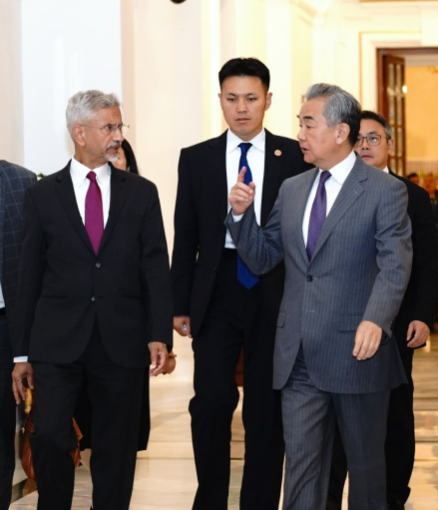On Tuesday, Chinese Foreign Minister Wang Yi will meet with Prime Minister Narendra Modi. For the first time in three years, Wang Yi is travelling to India. The meeting takes place one day after S Jaishankar stated on Monday that China and India desire improved relations. They will work to normalize relations in the face of uncertain US trade plans. This is the most recent indication of a thaw between the Asian adversaries.
The Ministry of External Affairs (MEA) has announced that Wang Yi would meet Prime Minister Narendra Modi at his home at 7 Lok Kalyan Marg at 5:30 PM today. Days before Modi is scheduled to travel to China to attend the Shanghai Cooperation Organization’s (SCO) annual summit. This meeting gains significance.
Chinese Foreign Minister Wang Yi to meet with PM Modi
The Ministry of External Affairs (MEA) has announced an itinerary for China’s Foreign Minister Wang Yi’s three-day visit to India. It includes a 5:30 pm visit to Prime Minister Narendra Modi at his official home at 7, Lok Kalyan Marg.
This follows the Chinese leader’s participation in the 24th meeting of the special representatives on the border issue between India and China. Continuing military and diplomatic negotiations between the two nations in the wake of the 2020 impasse in eastern Ladakh. It escalated tensions and worsened bilateral ties. Wang’s visit represents a significant move.

Officials say Wang is expected to update the prime minister on the latest developments in Sino-India ties as well as the SCO agenda. On the margins of the summit, he and Jaishankar are also anticipated to decide the agenda for Modi’s meeting with Xi Jinping.
China will consider India’s Concerns
China pledges to resolve India’s three main issues. FM According to reports, Wang Yi reassured EAM that China is meeting India’s demands for rare earths, fertilisers, and tunnel boring equipment.
Nearly 60 to 70 percent of the world’s rare earth material output comes from China. It also has the greatest deposits in the world. Electronics, renewable energy, military systems, and electric cars are just a few of the high-tech sectors. They depend on these 17 metallic elements.







Be First to Comment